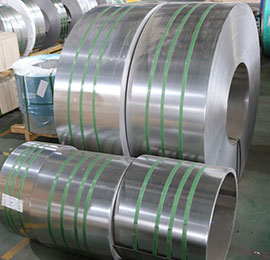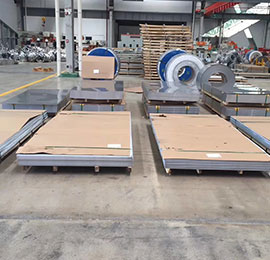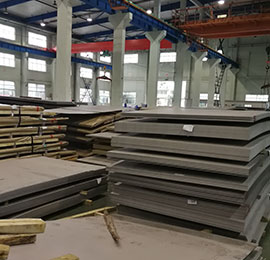Ⅰ. Basic knowledge about the stainless steel plate
The stainless steel plate has a smooth surface, high plasticity, toughness and mechanical strength, and is resistent to acid, alkali solutions and other media. As an alloy steel it is not easy to rust but not absolutely rust-free. Stainless steel plate refers to steel plate resistant to corrosion by weak media such as atmosphere, steam and water, while acid-resistant steel plate refers to steel plate resistant to corrosion by chemically corrosive media such as acid, alkali and salt. Stainless steel plate has a history of more than a century since it came out in the early 20th century. Stainless steel plate is a general term for stainless steel plate and acid-resistant steel plate. The development of stainless steel plates has laid an important material and technological foundation for the development of modern industry and technological progress. There are many types of stainless steel plates with different properties, and they have gradually formed several categories during the development process.
Ⅱ. Classification of stainless steel plate by application
The commonly used classification method is based on the structural characteristics of the stainless steel sheet and the chemical composition of the steel plate, or the combination of these two. Generally divided into martensitic stainless steel plates, ferritic stainless steel plates, austenitic stainless steel plates, duplex stainless steel plates and precipitation hardening stainless steel plates, etc., it also can be divided into two categories: chromium stainless steel plates and nickel stainless steel plates. Typical applications of stainless steel plate includes heat exchangers for pulp and paper-making equipment, machinery and equipment, dyeing equipment, film washing equipment, pipelines, exterior materials for buildings in coastal areas, etc. 420j2 stainless steel has a certain wear resistance and corrosion resistance, high hardness, its price is a lower category of stainless steel balls, suitable for the general requirements of stainless steel working environment.
According to the manufacturing method of stainless steel factory, there are hot rolling and cold rolling types, including thin cold plates with a thickness of 0.5.10-885 mm 72938 and medium-thick plates with a thickness of 4.5-100 mm. It is required to withstand the corrosion of various acids such as oxalic acid, sulfuric acid-iron sulfate, nitric acid, nitric acid-hydrofluoric acid, sulfuric acid-copper sulfate, phosphoric acid, formic acid, acetic acid, etc. It is widely used in chemicals, food, medicine, papermaking, petroleum, atomic energy, etc., as well as various parts and components of construction, kitchenware, tableware, vehicles, and household appliances.
The corrosion resistance of stainless steel sheet mainly depends on its alloy composition (chromium, nickel, titanium, silicon, aluminum, manganese, etc.) and internal structure. According to the manufacturing method, it is divided into two types: hot rolling and cold rolling. The surface of the stainless steel plate is smooth with high plasticity, toughness and mechanical strength. It is resistant to corrosion by acids, alkaline gases, solutions and other media. It is an alloy steel that is not easy to rust, but it is not absolutely rust-free.

 EN
EN



